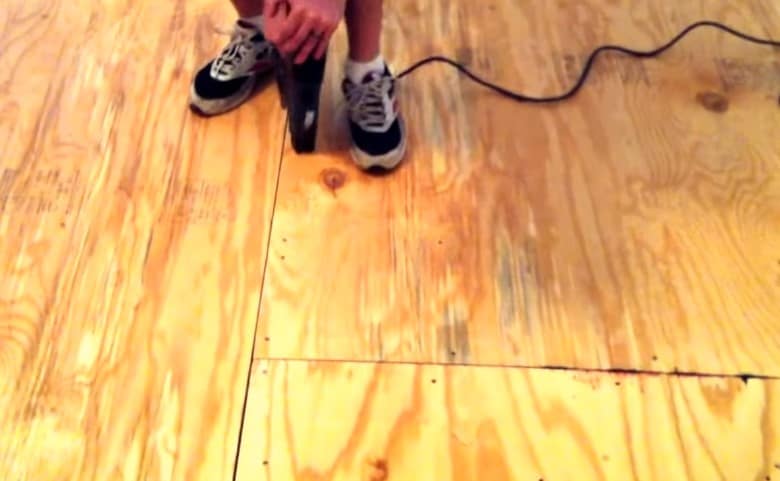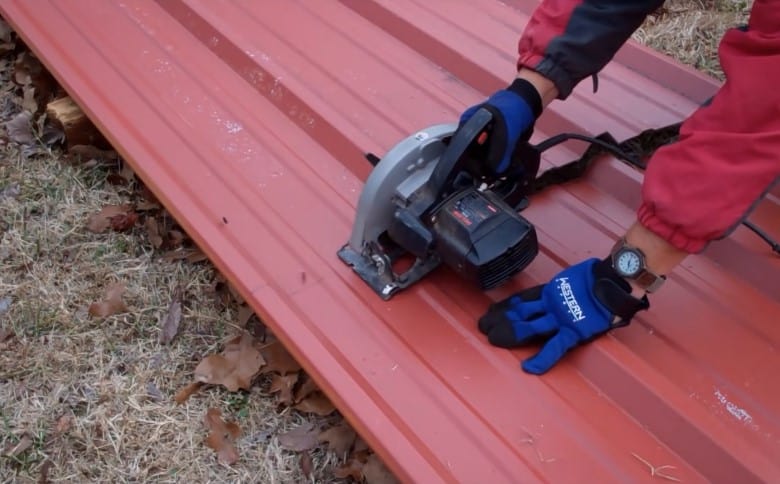When renovating or repairing a floor, it may be necessary to add an extra layer of plywood over the subfloor. Adding an extra layer of plywood over the subfloor will provide extra stability and minimize the chance of the subfloor from buckling. Additionally, the extra layer of plywood will provide a smoother surface for the finish flooring to be installed on top of.
Adding an extra layer of plywood over the subfloor can provide a number of benefits, including:
- Added insulation
- Added soundproofing
- Added stability to the floor
Plywood can be put over subfloor, but it is not always necessary. In some cases, it can be helpful to put a plywood overlay over an existing subfloor to provide a more even surface for the installation of new flooring.
If you are going to install a new floor over an existing subfloor, it is important to make sure that the surface is even and free of any major bumps or protrusions. If the surface is not even, you may need to install a plywood overlay to create a smooth surface for the new flooring.
Types of plywood
There are a few types of plywood that can be added on top of a subfloor, including marine plywood, AC plywood, and fire-rated plywood.
Marine plywood is designed to withstand moisture and extreme weather conditions, making it ideal for use in areas that are prone to flooding or high humidity. AC plywood is all-purpose plywood that is resistant to moisture and warping, making it a good choice for areas that are prone to moisture damage. Fire-rated plywood is designed to resist fire and is often used in areas where a fire-resistant surface is required.
When selecting a type of plywood to add on top of a subfloor, it is important to consider the climate and environment of the area where the plywood will be used.
Plywood materials
Adding an extra layer of plywood over the subfloor is a great way to improve the overall strength and stability of your flooring system. Plywood is a great material choice because it is strong and durable, and it can be installed in a variety of ways to suit your needs.
When installing plywood over the subfloor, make sure to use construction adhesive to attach it securely and use a moisture barrier to prevent moisture damage.
How to Add an Extra Layer of Plywood over a Subfloor
Adding an extra layer of plywood over the subfloor is a great way to add extra strength and stability to the floor. It is important to make sure that the subfloor is in good condition before adding the extra layer of plywood.
If the subfloor is in good condition, use a straight edge and a carpenter’s square to make sure that the plywood is level and square. If the subfloor is not in good condition, you may need to repair it before adding the extra layer of plywood.
Use a construction adhesive to attach the plywood to the subfloor. Make sure that the adhesive is compatible with both the plywood and the subfloor. If you are using a floating floor system, you may need to use a different adhesive.
Nail the plywood to the subfloor using a construction adhesive. Use a pneumatic nailer to make the job easier. Make sure that the nails are long enough to go through the plywood and into the subfloor.
If you are using a floating floor system, you may need to use a different type of nail. Make sure that the nails are long enough to go through the plywood and into the subfloor.
FAQ
What is the purpose of adding an extra layer of plywood over the subfloor?
There are a few reasons why you might want to add an extra layer of plywood over the subfloor. One reason is to add extra stiffness and strength to the floor. This can be important in areas where there is a lot of traffic or where the floor is subject to heavy loads.
Adding an extra layer of plywood can also help to level out a subfloor that is uneven. This can be helpful in areas where you are installing a new flooring material, as it can help to avoid bumps and lumps.
Finally, adding an extra layer of plywood can help to improve the insulation of a floor. This can be helpful in cold climates, where adding an extra layer of insulation can help to keep the heat in.
What are the benefits of doing this?
Adding an extra layer of plywood over the subfloor can provide some benefits, including:
Increased noise reduction: The extra layer of plywood can help to absorb noise from footsteps and other activities, which can make the home quieter overall.
Enhanced insulation: The plywood can help to insulate the home against cold or heat transfer, which can help to save on energy costs.
Increased stability: The extra layer of plywood can help to make the floor more stable and less likely to sag or warp over time.
How much thicker will the flooring be with this extra layer?
Adding an extra layer of plywood over subfloor will make the flooring thicker by a certain amount. The thickness of the flooring will depend on the thickness of the plywood that is added. In most cases, adding an extra layer of plywood will make the flooring about 1/4 inch thicker.
How many screws per sheet of plywood subfloor?
When installing plywood subflooring, you typically screw the sheets down every 12 inches along the edges and every 6-8 inches in the field. However, if you are installing an extra layer of plywood over an existing subfloor, you will need to screw the new plywood down every 4-6 inches.
Conclusion
When installing a new floor, it is important to ensure that the subfloor is in good condition. If the subfloor is damaged or uneven, it may need to be replaced or repaired before the new floor can be installed.
In some cases, it may be necessary to add an extra layer of plywood over the subfloor to ensure a level surface. This can help to prevent moisture damage and ensure a smooth surface for the new floor.



